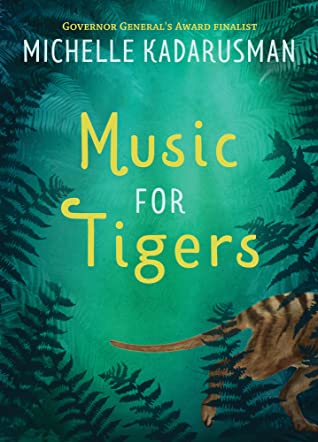Music for Tigers

Music for Tigers, by Michelle Kadarusman, tells the story of Louisa, a Canadian middle schooler who is sent to the Tasmanian rainforest to stay at her family's remote camp. There she learns about her family's history with the now extinct Tasmanian tiger. Louisa learns that one tiger may still exist, but that its habitat is threatened by an impending mining operation. Louisa and her uncle must earn the tiger's trust and lure it to safety.

The environmental themes found in Music for Tigers are welcome ones. It can be hard in children's fiction to find books that focus on environmental topics, particularly ones where the main character takes action to protect the environment. This novel touches on people's impact on local wildlife, emphasizing the need to protect habitats. I can see how focusing on a distant animal like the Tasmanian tiger could motivate students to learn more about local wildlife that is endangered. The end pages of the book provide a list of organizations that can provide more information on endangered wildlife, providing a springboard for further research.
It should be noted that the story itself focuses on the need to protect animals, such as with wildlife refuges, as opposed to more radical actions, like advocating against habitat destruction. It would be interesting to pair this book with Hoot, by Carl Hiaasen, a novel where the main character protests against the building of a restaurant that will destroy a burrowing owl habitat. Asking students to contrast how the main characters act to protect the endangered species would lead to some interesting discussion.
Music for Tigers includes a neurodiverse secondary character. Colin is another teen, who acts as a wilderness guide and has autism. The author defines the disorder well, and the main character connects with him and builds a friendship that puts them on equal footing. He teaches her about the Tasmanian rainforest, while she stands up for him. I appreciate the portrayal of this character, as I think students with autism will relate well to Colin and it has the potential to teach other students a lot about the disorder.
Finally, another welcome subplot is Louisa's struggle with anxiety. While she is a talented violinist, Louisa's anxiety prevents her from completing important auditions. Through her experience in Tasmania, Louisa finds the courage to tell her family about her anxiety and get assistance. This positive message about mental health is another excellent reason to recommend this book to middle years students.
